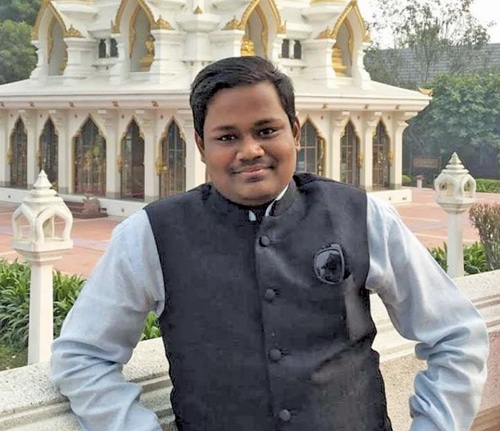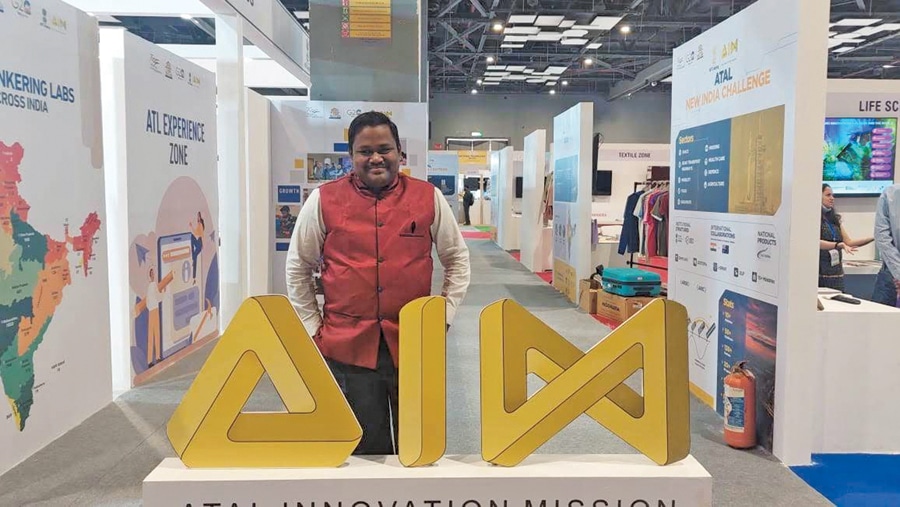Established in 2016 under the Atal Innovation Mission, Atal Tinkering Labs have played a pivotal role in nurturing STEM interests among students in India. EFY’s Yashasvini Razdan recently spoke with Suman Pandit, Young Professional, Atal Innovation Mission, Niti Aayog to delve into the impact of these labs over the past seven years.

Q. What spurred the establishment of Atal Tinkering Labs for school-going students?
A. The Atal Tinkering Labs programme envisions nurturing over one million innovators in India. In a nation facing diverse challenges, these labs impart crucial skills such as innovation, creativity, and design thinking. This vision aligns with preparing students for the future workforce and encourages them to address the unique challenges in India through innovation.The first ATL, operational since 2016, was set up at a girls’ secondary school.
Q. How do students, tinkering with wires and resistors, contribute to India’s future workforce?
A. Atal Tinkering Labs, a flagship programme under the Atal Innovation Mission (AIM), focuses on STEM (Science, Technology, Engineering, and Mathematics) and electronics education through practical, project-based learning. Equipped with robotics tools, sensors, and 3D printing equipment, students tackle real-world challenges. They serve as dedicated Makerspaces equipped with tools related to robotics, electronics, various sensors, mechanical tools, and 3D printing equipment. The labs also host a variety of collaborative competitions. Many students from these labs have presented their projects to the Prime Minister of India’s Office. Ultimately, these labs help contribute to a skilled workforce for India’s electronics manufacturing aspirations.
Q. Is there a mandated curriculum and timetable for students in Atal Tinkering Labs?
A. AIM has designed a three-level curriculum to help students develop and hone their innovation skills. The time allocated for students in Atal Tinkering Labs can vary depending on the school. While the recommended time is one to two periods, flexibility exists based on the school’s schedule and resource availability. Of over 200,000 senior secondary schools in India, only a few have ATLs, with time allocations varying based on school resources.
Q. How is the creative output of students assessed in Atal Tinkering Labs?
A. Exams focus on conventional subjects, but ATL emphasises creative output through competitions fostering essential digital skills. Our flagship challenge, the ATL Marathon, introduces a theme and provides various problem statements based on that theme to the students who craft significant projects within their Atal Tinkering Labs. They record the project’s video and submit it to us for evaluation. This year’s ATL Marathon has been conducted in collaboration with UNICEF.
We have introduced the National Space Innovation Challenge. In this challenge, students build projects centred around a specific space-related theme. Recent advancements in space exploration have spurred enthusiasm in this domain. In collaboration with Israel’s National Space Agency, we encourage students to identify and address space-related problems.
The Atal Tinkerpreneur is a digital bootcamp and competition introduced during the pandemic. It has various sessions and workshops where students are taught essential digital skills, such as creating business plans, mastering digital marketing, formulating go-to-market strategies, and venturing into entrepreneurship.
Q. How do you track students pursuing STEM education post-ATL exposure?
A. The ATL community, though evolving, witnesses success stories. The impact is tangible, with students winning global competitions, securing funding, and even attaining patents. For instance, one student won $200,000 in the IBM challenge, and another student, Ravinder Bishnoi, recently received ten million rupees in funding through the Atal New India challenge. Students have turned their projects into patents, started their own companies, and gained recognition from major companies such as Microsoft. However, I cannot provide an exact number, as these stories continue to surface through our extensive network of WhatsApp groups and knowledge-sharing channels that connect teachers and principals from every state. Ongoing research studies aim to quantify the program’s long-term effects.
Q. How do we assess the number or percentage of students who move on to STEM-related fields?
A. To be honest, we do not have a specific tracking system for this purpose. We have yet to have the opportunity to assess the exact impact or percentage of students who have participated in the ATL programme. While it is mandatory for every student to have access to ATL, we have not conducted formal assessments to measure the outcomes or long-term effects on students. There are some ongoing research studies aimed at evaluating the impact on students who have been part of ATL for a few years, but as of now, we do not have specific data that quantifies the assessment of students. The research process has already begun, and we expect to have results in two months.
Q. How are ATLs funded?
A. The government of India provides ₹2 million for establishing an Atal Tinkering Lab. Out of this, ₹1 million are allocated for capital expenses, while the remaining ₹1 million cover operational expenses over five years. Schools apply, and after selection, they receive a grant of ₹1.2 million. This is divided into two parts—₹1 million for capital expenses and setting up the lab with all the necessary equipment and infrastructure and ₹200,000 for operational expenses. After this is exhausted, they can apply for an additional ₹400,000 for operational expenses. This funding pattern continues for two years with ₹200,000 each year and then for the subsequent four years with ₹400,000 each year. The school must apply for the funds at each stage.
Q. How does a school maintain ATL after five years?
A. The establishment and support of Atal Tinkering Labs involve a hand-holding process. The government provides initial help to set up the lab and supports it for at least five years, with the possibility of extensions. However, the long-term sustainability of the lab becomes the school’s responsibility. The government cannot continuously provide funding, and after a certain point, typically around ₹2 million in total revenue, the school is expected to manage and sustain the Atal Tinkering Lab independently.

Q. How are operational expenses audited?
A. Schools are required to provide a utilisation certificate to the government every year. This certificate details how the grant-in-aid provided by the government has been utilised and spent by the school. The utilisation certificate is a document that outlines how the institution has spent the funds provided by the government. It typically includes details such as the initial balance, the amount received as a grant, and the ending balance, providing a clear account of how the funds were used. This certificate is a standard requirement for institutions that receive grants from the government. Additionally, every school needs to fill the ATL Dashboard every month, where they report their monthly activities
Q. How do you audit the utilisation certificate?
A. The team reviews the utilisation certificate once the school submits it. The auditing process for the Atal Tinkering Labs program follows the established guidelines for all government schemes, overseen by the Ministry of Finance and the Department of Expenditure. This adherence to government auditing procedures ensures transparency and accountability in line with the programme’s Central Sector status.
Q. Who oversees the day-to-day functioning of ATLs?
A. Every Atal Tinkering Lab is assigned an ATL Incharge. This ATL Incharge is typically a science or computer teacher in the school, although there are no rigid restrictions. The ATL Incharge undergoes online training to acquire various skills related to running an ATL effectively, and they play a crucial role in facilitating the lab’s activities and guiding the students.
Q. How have you hired and deployed 10,000 trained technical instructors to remote Indian schools, considering the well-known shortage of quality teachers in these areas?
A. ATL does not appoint teachers in the schools; instead, the teachers are selected from the school’s existing staff. Generally, the ATL Incharge is a science, computer, or physics teacher responsible for overseeing the ATL. These teachers balance their regular teaching duties with their role in managing the ATL. Having a dedicated resource person for the ATL is optional; it’s often a shared responsibility within the school. We train these teachers on various aspects like robotics, 3D printing, and electronics through online tools and certification courses. There is a special certified online teacher training course designed for this. Additionally, we offer a tinkering curriculum designed in a three-level format (Level one, Level two, and Level three), and ATL Equipment Manual, which equips the teachers with the knowledge and materials they need to instruct their students effectively.
Q. How do you keep track of the teachers’ learning abilities?
A. We utilise an ATL dashboard to maintain detailed reports to keep track of the teacher’s progress. The ATL dashboard is a vital tool for monitoring the performance of these labs. Additionally, our network of Mentors of Change, consisting of over 6,200 volunteers from diverse backgrounds, plays a crucial role in supporting schools and teachers in adopting innovative practices within the ATL ecosystem. Together, the ATL incharges, the dashboard, and the Mentors of Change are instrumental in our mission.
Q. Who qualifies as a Mentor of Change, and how do they contribute to ATLs?
A. Anyone can apply to become a mentor of change, and we have a selection process in place. Typically, our mentors come from diverse backgrounds. Many are professors, entrepreneurs, artists, business professionals, and individuals passionate about STEM and innovation. We welcome people from all walks of life who want to contribute to the community and support the Atal Tinkering Labs programme.
Q. How can someone become a Mentor of Change?
A. Becoming a Mentor of Change is open to everyone. Visit the official website of the Mentor of Change programme, where you will find an application form. The form typically delves into your background, community commitment, available time, and qualifications or higher education. The evaluation process determines eligibility.






